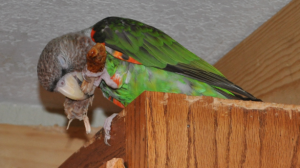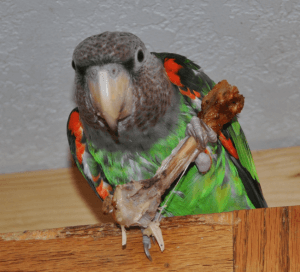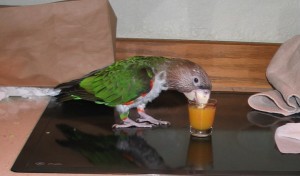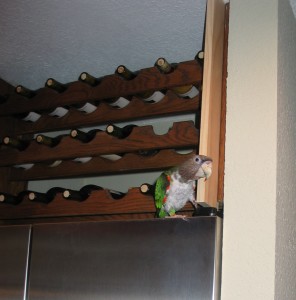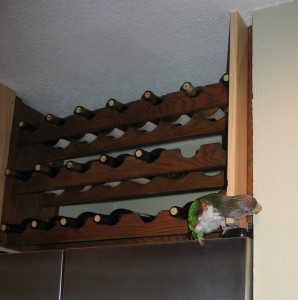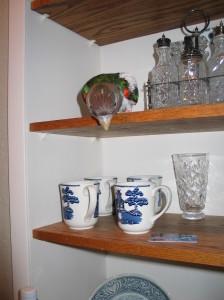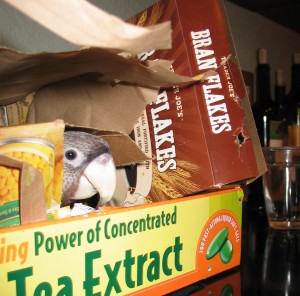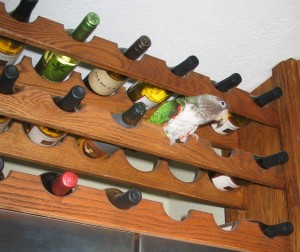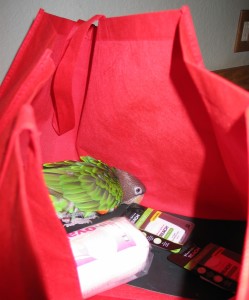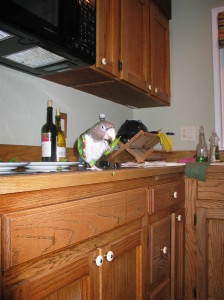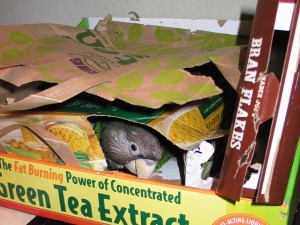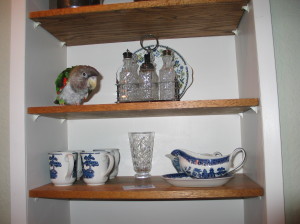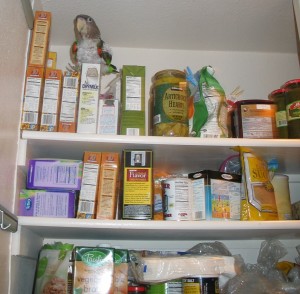Does it get more adorable than this little parrot? Like a baby would, Oscar-Wood, my Un-Cape parrot (Poicephalus fuscicollis), pacifies himself. An infant will suck on a finger or a pacifier (dummy in British English). Oscar-Wood sucks on a bit of wood he breaks off, and tickles his head and neck with pink, dexterous, hand-like claws, at the same time. He will fold one magical toe over the other three to create an ideal tickling implement. (Click on images to enlarge.)
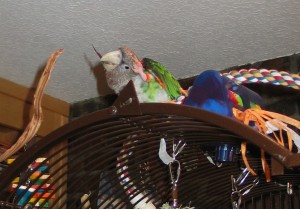
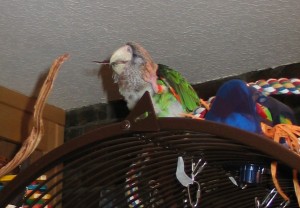
I’ve tried to Google about the remarkable claw-eye-beak (“fine motor”?) coordination displayed by the parrot (watch this genius macaw), but can’t find much. (Help? Here is The Smart Bird Page, more anecdotal and amusing than scientific.) When I first became a parront, I was unaware of the remarkable claw- structure and dexterity the parrot possesses. Unlike most ordinary birds who have one back- and three front claws , the parrot has two in front and two at the back. These he cups when he eats, as the parrot will delicately hold a piece of food in his claw and pick at it with his beak. The parrot will also use these delicate appendages to manipulate objects. For example, Oscar-Wood stabilizes this barrel-of-fun with his pink claws, and then uses his mother-of-pearl beak to twist the thing in the right direction and then pull the barrel to pry a nut from within.
The human being’s fantastic facility with his digits is one indication of his great intelligence. In addition to their hand-like structure, the parrot’s claws, similarly, are huge in proportion to his little body—approximately a fifth of the size of his body when stretched out. This relationship is surely mirrored in the area given over in the parrot’s brain to the claws.
As I’ve reported here before, there has been good, if not sufficient, research into the great intelligence of the parrot, especially of the African Grey (who easily trumps the primates). But I have not seen specifics about the adroit claws that so fascinate me.
So too are the language-acquisition skills of the parrot remarkable. Human beings have often, conveniently, explained the parrot’s speech as pure mimicry. Just as a child would, however, the parrot absorbs the language he is capable of acquiring through imitation, behavioral conditioning, reinforcement, all in context. As is the case with toddlers, the orphaned parrot (who has been in a shop or shelter for too long) will have often missed the crucial, optimal period during which language is learned. I find that Oscar-Wood, who spent the first 4 years of life in a shop, caged, mostly, has fewer language skills than little T. Cup, who arrived in our home as a 7 month old baby. T. Cup uses words in context. If I’m out of the room, he’ll call, “Mommy, mommy.” He has just learned the great benefits that come with demands for “Daddy, daddy.”
As I type, he is muttering to himself (after causing a racket by bashing his water bowel): “Stop it, stop it.” Around food time, it’s “Yummy-yummy.” When caged, he’ll emit cries of “Outside, outside.” Should T. Cup become very noisy, Oscar-Wood will scold him in his cute little voice: “Step-up, step-up,” which is the command parronts give their parrots to step-up onto them.
Humans love to watch Disneyfied, talking dogs, pigs, spiders—all animals that DON’T TALK, and have very few human attributes. Indeed, the parrot is the most proper object of Anthropomorphism.
However—and I know I’ll anger the wonderful woman bird-breeder who sold us these two characters—I don’t think parrots are suitable pets for most people. They are far too labor-intense, needy, sensitive and sentient. A constantly caged, lonely, unattended parrot will immediately become a “problem bird” (the owner being the real problem), who will soon be the object of abuse.
I am oh-so-very fortunate to work from home. Thus, my parrots are seldom caged; talk to me constantly, and have a flock-like arrangement with us. Cage these social creatures and deny them the one-on-one bond formation their biological blue-print dictates—and you have a tragic, depressed, feather-denuded little bird.
Think about it: Many parrots pair for life, create creches in which they raise their young; and when a Hyacinth Macaw, for example, loses a partner, the widow/widower is then adopted by an intact pair. This rather advanced social life precludes adaptation to a lonely, caged existence.

